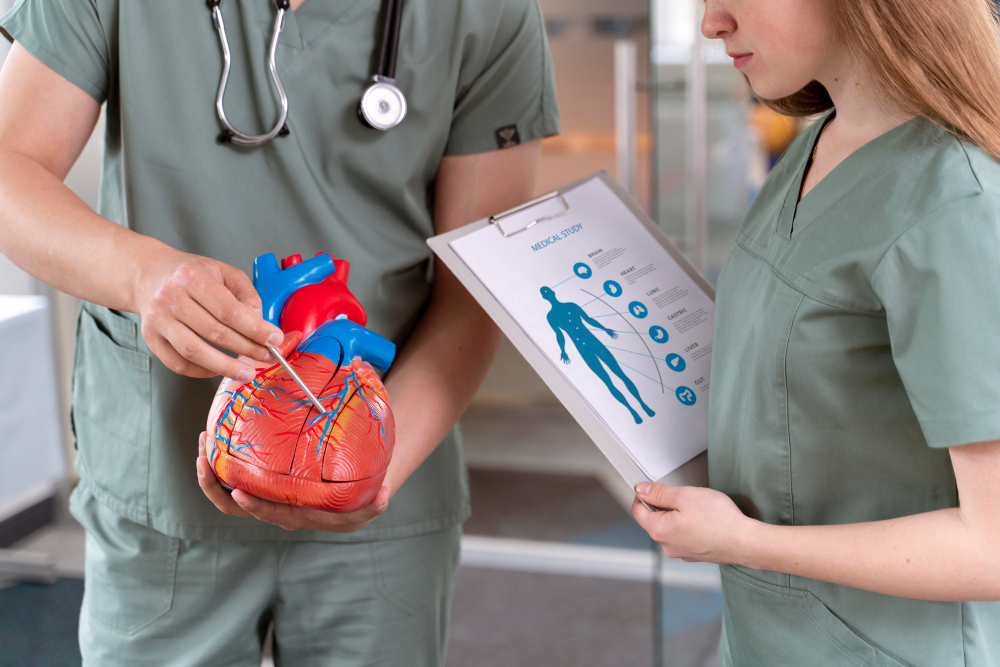Atrial Fibrillation

Introduction to Atrial Fibrillation
Atrial Fibrillation (AFib) is a common type of arrhythmia, characterized by an irregular and often rapid heart rate. This condition arises when the atria, the heart’s upper chambers, experience chaotic electrical signals, leading to inefficient blood flow and increasing the risk of stroke and heart failure.
Causes of Atrial Fibrillation
Heart-Related Causes
- Coronary Artery Disease: Narrowed arteries reduce blood supply to the heart.
- Heart Attack: Damage to heart tissue can disrupt electrical pathways.
- Heart Valve Problems: Faulty valves can strain the heart and cause AFib.
- Congenital Heart Defects: Structural issues present from birth can lead to arrhythmias.
Other Contributing Factors
- High Blood Pressure: Hypertension increases the workload on the heart.
- Thyroid Disorders: Hyperthyroidism can affect heart rhythm.
- Sleep Apnea: This condition causes interruptions in breathing during sleep, affecting heart health.
- Alcohol and Drug Use: Excessive consumption can trigger AFib episodes.
Symptoms of Atrial Fibrillation
The symptoms of AFib vary in severity and may include:
- Palpitations: Noticeable heartbeats that are irregular or rapid.
- Fatigue: Feeling unusually tired or weak.
- Shortness of Breath: Difficulty breathing, especially during physical activity.
- Dizziness: Lightheadedness or fainting spells.
- Chest Pain: Discomfort or pain in the chest area.
Diagnosis of Atrial Fibrillation
Physical Examination
A doctor may suspect AFib based on symptoms and an irregular pulse felt during a physical exam.
Electrocardiogram (ECG)
An ECG is the primary diagnostic tool for AFib, recording the heart’s electrical activity and identifying irregularities.
Holter Monitor
This portable device records heart activity over 24 to 48 hours, providing a more extended look at the heart’s rhythm.
Echocardiogram
An echocardiogram uses sound waves to create images of the heart, helping to identify structural problems or blood clots.
Treatment Options for Atrial Fibrillation
Medications
- Rate Control Medications: These drugs help slow the heart rate.
- Rhythm Control Medications: These medications aim to restore a normal heart rhythm.
- Anticoagulants: Blood thinners reduce the risk of stroke by preventing clots.
Non-Surgical Procedures
- Cardioversion: An electric shock or medication is used to reset the heart’s rhythm.
- Catheter Ablation: A catheter is used to destroy areas of the heart causing erratic signals.
Surgical Options
- Maze Procedure: Surgical incisions create a pattern of scar tissue to redirect electrical signals.
- Left Atrial Appendage Closure: This procedure reduces stroke risk by closing off the area where clots often form.
Complications of Atrial Fibrillation
If left untreated, AFib can lead to severe complications, including:
- Stroke: Blood clots formed in the atria can travel to the brain, causing a stroke.
- Heart Failure: Inefficient pumping can weaken the heart over time.
- Chronic Fatigue: Persistent tiredness can affect quality of life.
- Cognitive Decline: Repeated strokes and reduced blood flow to the brain can impair cognitive function.
Living with Atrial Fibrillation
Managing AFib involves lifestyle changes and regular medical care:
- Healthy Diet: Focus on heart-healthy foods, such as fruits, vegetables, and whole grains.
- Regular Exercise: Engage in moderate physical activity to strengthen the heart.
- Avoiding Triggers: Limit alcohol, caffeine, and stress, which can provoke AFib episodes.
- Routine Monitoring: Regular check-ups with a cardiologist are essential to manage AFib effectively.
